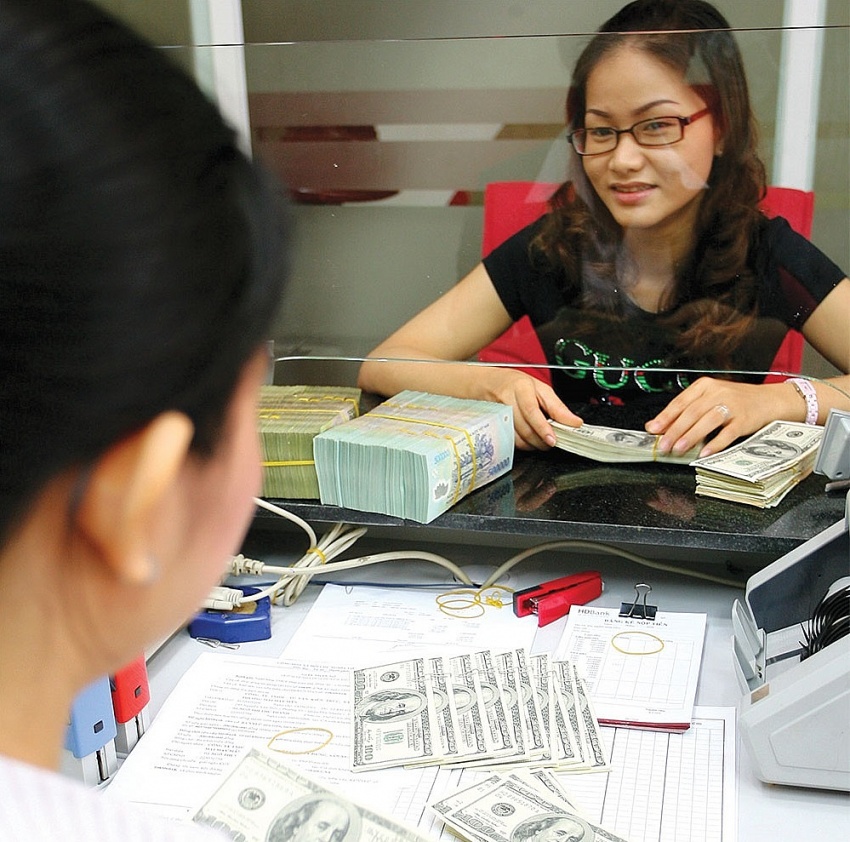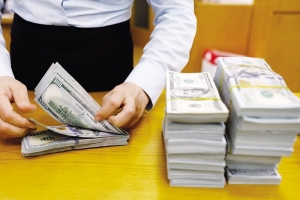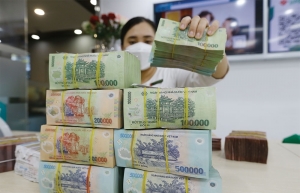Exchange rate fluctuations set to carry on this year
The USD/VND exchange rate continued to experience a volatile year in 2023, although the amplitude was not as large as the second half of 2022.
 |
The main factors affecting exchange rates last year were the fluctuations between interest rates, inflation, and growth, according to Ngo Dang Khoa, director of Foreign Exchange, Capital Markets and Securities Services at HSBC Vietnam.
Khoa said that weak economic growth, rapidly cooling inflation, and easing concerns about liquidity have made Vietnam’s policy priorities focus on supporting growth. This is in stark contrast to the United States, where the job market has not cooled and high inflation kept the Fed on a tightening bias for much of 2023.
“The USD had a year of many unexpected developments, especially in the final months when inflation continued to fall below the central bank’s target and global growth remained weak. The market is starting to see more of an interest rate cut in 2024, along with the Fed’s pivot in December, causing the USD to be weaker. This contributes to bringing the exchange rate back to the 24,250-24,350 price range and will likely close this year at this price,” Khoa said.
Economist Le Xuan Nghia said that forecasts cannot decide between global economic growth being flat or decreasing without a recession, or that there could be a slight recovery.
“The USD will depreciate and the exchange rate pressure on the VND will be moderate, except for unusual risks that may occur, such as rising raw material prices due to geopolitical conflicts and global energy prices increase. These problems make it difficult for inflation to return to the level desired by central banks in 2024 and global inflation may still remain at a level higher than 2.5 per cent. This may have a certain impact on Vietnam’s exchange rate, which will not be completely stable as desired. However, this fluctuation is not strong,” Nghia said.
Tran Thi Khanh Hien, director of Research Division of MB Securities Company, said that the risk of deterioration in asset quality will still be large in 2024. The industry-wide bad debt ratio in the third quarter of 2023 reached 2.2 per cent, an increase of 64 basis points compared to 2022 and is the highest level of bad debt since 2015.
“Almost all banks continue to record an increase in bad debt ratio in the third quarter of 2023 compared to the beginning of the year. On average, state-owned joint stock commercial banks have an increase of 0.4 per cent compared to the beginning of the year and this figure for private joint stock commercial banks is 0.7 per cent,” Hien said.
According to Hien, a 2023 circular on restructuring debt repayment terms and rescheduling debt has helped the bad debt ratio and the decline in bad debt coverage ratio decelerate.
“Therefore, we expect bad debt across the industry to increase slightly by 10-20 basis points and peak in the fourth quarter of 2023. In addition, using a large amount of provisioning in the first nine months of 2023 to handle bad debt also contributes to reducing bad debt of banks,” Hien said.
Although bad debt is expected to peak in the fourth quarter of 2023 and provision costs for the entire industry are showing a positive trend, Hien emphasised that the pressure on provisioning in 2024 is still significant.
“However, we believe that this pressure will have a clear differentiation among banks. Banks that have increased large provisions in 2023 and brought asset quality to a low level may have more room to handle and will therefore have the advantage of higher profit growth,” Hien said.
 | Exchange rate pressure to soften by year end Experts are confident the VND-dollar exchange rate will soon soften, leveraging a raft of factors. |
 | Soothed pressure on VND-USD exchange prospects The VND-US dollar exchange rate is expected to be on an even keel in the forthcoming time amid abated influencers both at home and abroad. |
What the stars mean:
★ Poor ★ ★ Promising ★★★ Good ★★★★ Very good ★★★★★ Exceptional
Related Contents
Latest News
More News
- Securing capital and efficiency for Vietnam’s 2026-2030 growth ambitions (December 17, 2025 | 10:00)
- Energy sector in need of blended finance mechanisms (December 17, 2025 | 09:00)
- Vietnam still has room to mobilise capital for sustainable growth (December 17, 2025 | 08:57)
- Long-term capital seen as key hurdle to green growth (December 16, 2025 | 08:00)
- Gold prices swing amid tax debate and import uncertainty (December 15, 2025 | 18:04)
- Agribank frames bank credit as catalyst for green growth (December 15, 2025 | 17:59)
- Vietnam’s green transition demands collective financial action (December 15, 2025 | 12:00)
- VIR workshop highlights capital and policy for sustainable development (December 15, 2025 | 11:00)
- Promoting digital assets initiative in Vietnam (December 13, 2025 | 09:30)
- Experts flag gaps as national financial strategy under review (December 12, 2025 | 15:13)

 Tag:
Tag:






















 Mobile Version
Mobile Version